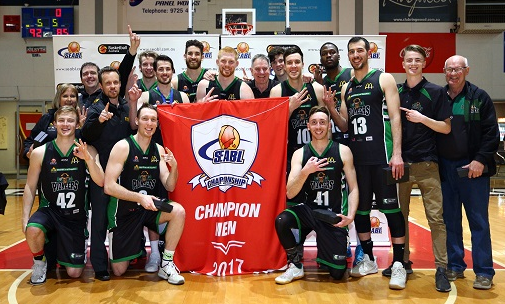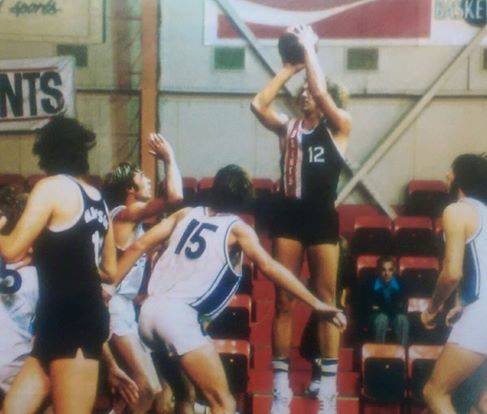Must SEABL go and who does BA PR?
TweetAN exciting new end-of-season national club championship and the reinvigoration of state leagues ultimately will lead to the demise of Australia's longest-running interstate basketball competition, the SEABL.
Now isn't THAT the way Basketball Australia last week - or even earlier - should have told its story?
You know, getting on the front foot with the good news, instead of waiting for the bad news to filter out?
A week ago when we broke the story here at Basketball On The Internet - even though subsequently it's been said to have been common knowledge for weeks - BA chose to deny the allegations or taint them as containing "a number of inaccuracies".
And yet here we are, a week later, and BA's formal statement, signed off by chief executive Anthony Moore, confirms pretty much everything the article said.
"At a meeting of SEABL Clubs on 18 August ahead of the SEABL Grand Finals, Clubs were informed that the BA Board did not support the proposal for a self-managed League."
(Yep, that's what the story said.)
"The Clubs were also advised that in considering their proposal, the BA Board had asked for a review of the SEABL competition in the context of the Australian basketball pathway for athletes, coaches and officials including our State Leagues and our two national Leagues in NBL & the Chemist Warehouse WNBL Championship."
So, even though those discussions still are ongoing, the reality is the cost of the interstate SEABL competition has made it anything but equitable for some time now, with clubs withdrawing and others struggling to meet the financial burden.
Back in 1965 when Lindsay Gaze and Melbourne Church initiated the South Eastern Conference, it assuredly filled a need for interstate club-based competition.
But in 1970, when the Australian Club Championship was inaugurated and brought the nation’s best teams together at Melbourne’s Albert Park Stadium for a memorable tournament, the SEC’s relevance immediately became significantly less so.
As it was, Gaze’s Melbourne Church beat Ken Cole’s St Kilda Saints in an epic ACC Final, many of the game’s biggest names of that era, Rocky Crosswhite (pictured), Billy Wyatt, Toli Koltuniewicz, Brian Kerle, Eddie Palubinskas, Robbie Johnstone in action in front of a jam-packed Albert Park Court One crowd.
The previous evening, St Kilda and SA’s West Adelaide Bearcats staged a monumental semi final stoush, highlighted by the sublime scoring skills of Werner Linde and Palubinskas in what remains one of the greatest games of basketball ever staged in Australia.
With the ACC established, it ran successfully from 1970-1979, the SEC recognising that and going into recess from 1971-1980.
In 1979, the NBL launched as the National Invitational Basketball League, taking the ACC tournament format into a full-fledged home/away league and, in the process, superseding the need for that annual carnival.
But now, as those NBL teams – who still played in their domestic intrastate leagues – established an upgrade in standard from their domestic opponents, the need for a league to fill the breach became evident. Hence the rebirth of the SEC in 1981, this time as the SEBL.
Winning or performing well in the SEBL meant consideration for NBL admission – witness Geelong Supercats (below) winning the title and jumping leagues from 1981 to 1982.
As times changed, the shape of the game in Australia has changed with it.
Fast-forward now to 2018 where the NBL is a separate elite competition, featuring NBA players, internationals, star imports and the best Australian talent available.
The question becomes twofold. One, do we still need a “bridging league” between the NBL and the state leagues, which is essentially what the SEABL is?
And Two, what is BA best at, running leagues or tournaments?
Given BA successfully runs under-14 nationals, under-16, 18, 20 Australian championships and has done for more than half a century, against its track record for administering leagues – NBL, WNBL and now SEABL – the answer to that one is fairly obvious.
Abandoning the SEABL makes sense if the state leagues – QBL, Waratah, Big V, Premier League (SA) and SBL (WA) – undergo an upgrade and there’s an Australian Club Championship at the pinnacle of it to determine the No.1 club team in the nation.
So what happens to the existing SEABL clubs?
The plan to start a new competition in Victoria which stands above Big V Championship would accommodate that state’s SEABL competitors, plus Tasmania’s elite teams. Albury would have the option of competing in the new “Even Bigger V” competition, or joining Waratah.
Effectively, the only club negatively impacted is Mount Gambier Pioneers which would either have to look at SA’s Premier League or cease to exist.
Neither are especially palatable options.
By not fielding a women’s program and having an entire region behind it, the Pioneers have enjoyed great recent success and may now be a victim of that success.
Getting in and out of the Mount also has been no picnic for SEABL clubs, especially with the Pioneers’ insistence on Friday night home games. Clearly, they have to cater to their own market but again, they now may be the unwitting architects of their own demise.
BA has bluntly said it will not support the SEABL continuing under self-governance.
Is the time for that “bridging league” over?
BA obviously believes so but then it has never been good at running leagues.
The SEC, NBL, SEBL/SEABL, WNBL were ALL started by passionate clubs, coaches, players, NOT administrators.
If there is a low-cost alternative to shutting up shop, it may be worth exploring but that now would be in defiance of the federation.
In the 60s and 70s, there was no doubt the VBA had the nation’s best domestic basketball competition.
Consequenrly for years at the ACC, it was Melbourne or St Kilda for the championship.
So if now there is to be a “Big-Bigger-Biggest V” competition and the return of the Australian Club Championship, it might well be Nunawading Spectres, Dandenong Rangers or Hobart Chargers the best teams from SA, NSW, Queensland and WA will constantly have to go through.
So be it.
Reviving the Australian Club Championship and reinvigorating the state leagues in the process is an admirable goal and alternative to a competition which may have run its course.
Pity BA has no clue how to sell an idea – even a very good one – and continues to employ political double-speak instead of championing a tournament to which every state league team in Australia could aspire.


